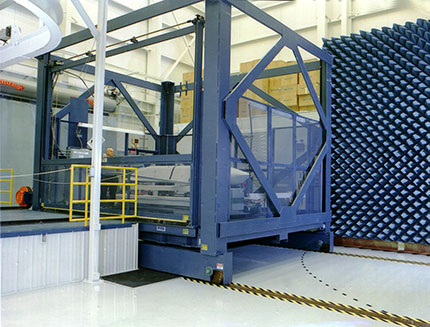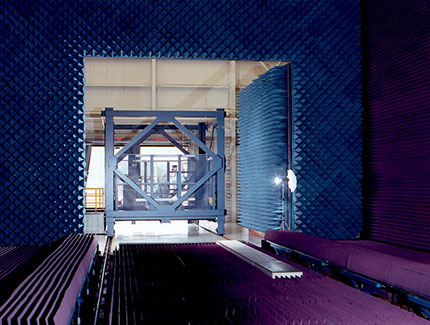Search Knowledge Base by Keyword
-
Case Studies
- A Sugary Sweet Lifting Solution for Peeps & Company Retail Store
- Bayside Harley’s Product Showcase and PFlow Bring in the Riders
- Books Arrive in Underground Archive with the Help of a PFlow Conveyor
- Creative Design Highlights Vertical Conveyor at Laminated Glass Plant
- Custom Designed Hydraulic VRCs Help Maximize Space at Tyson Foods
- Custom Designed PFlow F Series Assists with Funeral Services
- Custom PFlow Lift Helps Create 9,600 SF of Storage within Existing Building
- Everything is Bigger In Texas – Including the PFlow M Series VRC!
- For Moving Fragile Cargo, Boeing Called PFlow Industries
- FuelCell Energy Loads Components with the Help of PFlow Material Lifts
- Georgia Pacific Moves Finished Product with the PFlow M Series
- Global Logistics Leader Doubles Productivity with PFlow Lifts
- Gravity Makes the Wine, PFlow Vertical Lift Takes Care of the Rest
- High-Capacity Mezzanine Lift Effortlessly Elevates 15,000 lb Payloads
- Historic Pritzlaff Building Repurposed Into Popular Event Venue with Assist from PFlow Hydraulic VRCs
- Liberated By Upward Mobility
- Manufacturing Plant Replaces 10-ton, 200′ Hoist with PFlow Vertical Lift
- Merged Controls of PFlow Lift and Laundry Cart Washer Regulate the Flow of the Entire System
- Milwaukee Waterfront Deli and PFlow Deliver
- Moving at the Speed of Fashion
- Moving-Floor Assembly Line Streamlines Implement Production
- PFlow and Parking Vault are Solving Major Parking Needs
- PFlow Automated System Provides Continuous 2-Way Pallet Flow
- PFlow Corners the Market for 'Big,' Heavy-Duty Material Lifts
- PFlow Designs Lift for Underground Parking at a Lake Tahoe Home
- PFlow F Series Helps Retailer Utilize Difficult-to-Access Space
- PFlow Galvanizing Provides a Protective Coat for Juice Plant Lift
- PFlow Heliport Lift Helps Offshore Oil Platform
- PFlow Helps Repurpose Restaurant into Government Service Facility
- PFlow Hydraulically Powers the Upward Expansion at Alcom Electronicos Reynosa Facility
- PFlow Lift Integrates Perfectly with 10-Story Power Plant Tower
- PFlow Moving Concourse Helps 'Big Bertha' March Into College Stadium
- PFlow Navigates Uncharted Territory with Vertical Lift at Naval Drydock
- PFlow Pallet Elevator is the Vertical Lift Solution for Nutrilite Warehouse
- PFlow Provides Steady Travel for Lockheed Martin Missile Plant
- PFlow Retrofits 2 Lifts in Single Shaft to Keep Hospital Supplies Moving
- PFlow Screw Lift Provides a Safe and Controlled Movement of Satellites
- PFlow System is an Integral Part of the Paper Production Line
- PFlow VRC Keeps the Pipeline Full for Large Pharmaceutical Distributor
- PFlow VRCs Help Keep the Beer Crisp and Chilled at NFL Stadium
- PFlow VRCs Installed in Concrete Shaft Ways of Seattle Tunnel Project
- PFlow VRCs Provide Vertical Logistics at High Rise Audi Dealership
- Stage Lifts Spirits – and Nascar Vehicle
- Tower Above the Competition with a PFlow Vehicle Display System
- Unique Lift System Enables Installation and Servicing of Telescope Mirrors
- Show all articles ( 30 ) Collapse Articles
-
Preventive Maintenance
- 21 Series Hydraulic Lift - Preventive Maintenance Checklist
- B Series Box Lift - Preventive Maintenance Checklist
- D Series Hydraulic Lift - Preventive Maintenance Checklist
- DB Series Package Handling Lift - Preventive Maintenance Checklist
- F Series 4-Post Mechanical Lift - Preventive Maintenance List
- M and MQ Series Mechanical Lifts - Preventive Maintenance Checklist
-
Service Bulletins
-
Installation Manuals
- 21 Series - Hydraulic VRC - 2-Post Cantilever - Installation Manual
- 21 Series - Hydraulic VRC - 2-Post Straddle - Installation Manual
- B Series - Box Lift - Owner's, Installation, and Maintenance Manual
- D Series - Hydraulic VRC - Installation Manual
- DB Series - Package Handling Lift - Owner's, Installation, and Maintenance Manual
- F Series - Mechanical VRC - 4-Post Installation Manual
- M Series - Mechanical VRC - 2-Post Cantilever - Installation Manual
- M Series - Mechanical VRC- 2-Post Straddle- Installation Manual
-
Owner's Product Manuals
- 21 Series - Hydraulic VRC - Owner's Manual
- B Series - Box Lift - Owner's, Installation, and Maintenance Manual
- D Series - Hydraulic VRC - Owner's Manual
- DB Series - Package Handling Lift - Owner's, Installation, and Maintenance Manual
- F Series - Mechanical VRC - Owner's Manual with Eurodrive
- F Series - Mechanical VRC - Owner's Manual with NORD Motordrive
- M Series - Mechanical VRC - Owner's Manual with Eurodrive
- M Series -Mechanical VRC - Owner's Manual with Nord Motordrive
-
Dimensional Schematics
- 21 Series CSI Spec - No Quick Connect
- 21 Series CSI Spec - Quick Connect
- 21 Series Hydraulic Lift - Cantilever Style - Dimensional Schematic
- 21 Series Hydraulic Lift - Straddle Style - Dimensional Schematic
- 21 Series, Cantilever, CAD Drawing
- 21 Series, Straddle, CAD Drawing
- B Series Box Lift - Dimensional Schematic
- Bi-Panel Swing Gate Dimensions
- Bi-Panel Vertical Gate Dimensions
- D Series CAD Drawing
- D Series CSI Spec - No Quick Connect
- D Series CSI Spec - Quick Connect
- D Series Hydraulic Lift- Dimensions Schematic
- DB Series CAD Drawing
- DB1 Series Package Handling Lift - Dimensional Schematic
- DB2 Series Package Handling Lift - Dimensional Schematic
- F Series 4-Post Mechanical Lift - Dimensions Schematic
- F Series CAD Drawing
- F Series CSI Spec
- M Series 2-Post Mechanical Lift - Cantilever Style - Dimensions Schematic
- M Series 2-Post Mechanical Lift - Straddle Style - Dimensional Schematic
- M Series CSI Spec
- M Series, Cantilever, CAD Drawing
- M Series, Straddle, CAD Drawing
- Single Panel Vertical Gate Dimensions
- Single Sliding Gate Dimension
- Single Swing Gate Dimensions
- Show all articles ( 12 ) Collapse Articles
-
Applications
-
Videos
-
Gate Installation Instructions
- 15709-0005 - Gate Installation - Sliding - Swing - Bi-Parting
- 15709-0014 - Gate Installation - Bi-Panel Vertical Acting
- 15709-0120 - Gate Installation - Floor Level Swing with Sliding Latch
- 15709-0126 - Gate Installation - Floor Level Bi-Swing with Sliding Latch
- 15709-0133 - Gate Installation - Motorized Single Vertical Acting
- 15709-0143 - Gate Installation - Motorized Bi-Panel Vertical Acting
- 15709-0156 - Gate Installation - Single Vertical Acting
- 15709-0157 - Gate Installation - Carriage Mounted Single Vertical Acting
-
Safety Data Sheets
- 15713-0001 - SDS, Lubriplate 930 AAA
- 15713-0002 - SDS, Mobil SHC 630, Standard Synthetic Oil
- 15713-0003 - SDS, MobilGear 600 XP 220, Standard Base Oil
- 15713-0004 - SDS, Shell Omala S4 GX 220, Gear Lubricant
- 15713-0007 - SDS, Paint, Enamel - PFlow Blue, Aerosol
- 15713-0008 - SDS, Exxon MobilGrease XHP 222 Special
- 15713-0011 - SDS, Paint, Fast Dry Acrylic Enamel, PFlow Blue
- 15713-0012 - SDS, Paint, Universal Primer, PFlow Primer II
- 15713-0014 - SDS, Hydraulic, Biodegradable, Clarion AW Oil 32
- 15713-0015 - SDS, Weld-Aid Brite Zinc B-100, Aerosol
- 15713-0018 - SDS, Shell Omala S2 G 220, Gear Lubricant
- 15713-0021 - SDS, Fast Cure Epoxy, Macropoxy 646 (Part A) Mill White
- 15713-0022 - SDS, Dow Corning Oil, Molykote L-1468FG, Synthetic Freezer Chain Oil
- 15713-0023 - SDS, Mobil SHC CIBUS 220, Synthetic Oil
- 15713-0026 - SDS, Eureka Fluid Film Aerosol, Corrosion Inhibitor
- 15713-0028 - SDS, Benz Oil DEXRON III, ATF Hydraulic Fluid
- 15713-0031 - SDS, Shell Omala S4 GX 150, Gear Oil
- 15713-0035 - SDS, Starfire Multi-Purpose ATF Dexron III/Mercon
- 15713-0036 - SDS, Clarion Food Grade Machinery AW 32, Hydraulic Oil
- 15713-0038 - SDS, Paint, Safety Yellow, Aerosol
- 15713-0039 - SDS, Paint, Safety Yellow, Enamel
- 15713-0042 - SDS, Roll-on Paint, PFlow Blue
- 15713-0043 - SDS, Mobil SHC Gear 220 Synthetic Gear Lubricant
- 15713-0044 - SDS, LPS Cold Galvanize BrightCoat Aerosol
- 15713-0045 - SDS, CRC Dry Graphic Lubricant
- 15713-0046 - SDS, Duraspar 130 Gray Primer
- Corothane Exterior Epoxy - Safety Data Sheet
- Corothane Exterior Epoxy Hardener - Safety Data Sheet
- Show all articles ( 13 ) Collapse Articles
PFlow Provides Steady Travel for Lockheed Martin Missile Plant
Lockheed Martin Missiles and Fire Control develops, manufactures and supports advanced weapon systems. Lockheed Martin’s customers include the U.S. Army, Navy, Air Force and Marine Corps; and foreign nations approved by the U.S. State Department.
Lockheed Martin’s Pike County Operations in Alabama has conducted final assembly, testing operations and storage of anti-armor missiles such as the helicopter-launched Hellfire II, the shoulder-fired Javelin, and the radar-guided Longbow Hellfire.
Pike County, Alabama
Missile Manufacturing Plant
- F Series Platform
- Transports Loads up to 6,500 lbs
- 14’ Travel
- 4’ FPM Travel Speed
 The facility also assembled the Patriot air defense missile and the medium-range air-to-ground AGM-142 missile used during Desert Storm. In August 1999, Pike County Operations started performing final missile assembly and testing of Joint-Air-to-Surface Standoff Missiles (JASSM). JASSM is a long-range, conventional, air-to-ground precision missile designed to destroy well-defended, high-value targets.
The facility also assembled the Patriot air defense missile and the medium-range air-to-ground AGM-142 missile used during Desert Storm. In August 1999, Pike County Operations started performing final missile assembly and testing of Joint-Air-to-Surface Standoff Missiles (JASSM). JASSM is a long-range, conventional, air-to-ground precision missile designed to destroy well-defended, high-value targets.
Plant equipment includes a master computer that manages and coordinates energy use, temperature and humidity conditions, fire detection and security. A special system automatically warns of approaching storms with potential lightning strikes. Digital communications support administrative and internal security while providing instantaneous access to state and local emergency agencies. The facility also includes automated assembly lines that virtually eliminate manual missile handling.
In preparing for the JASSM missile project, Michael P. Goeb, director of major projects for Lockheed Martin Missiles and Fire Controls, had to determine the best method to move missiles out of the production area and into a testing chamber.
Goeb and his team then began to design a more cost-effective, practical and safer solution.
Working with PFlow engineers, Lockheed Martin developed a new concept to move the missiles. Safety was a primary design objective-given the sensitive nature of the product that was being transported. A specialized platform was designed to move a missile horizontally into the chamber and then vertically to the designated test station. The final concept required approximately four months to develop.

To transport the missile, PFlow designed a 6,500 lbs. capacity work platform that travels laterally on 18” wheels via a gear-and-pinion line shaft drive. Vertical travel is controlled via screw lifts mounted inside the platform support columns. Horizontal and vertical positioning is accurate to within 1/8”.
The platform is approximately 20’ 0” x 20’ 0” and weighs more than 28,000 lbs. and travels on a rail system, recessed into the floor. The platform meets OSHA and Lockheed Martin safety standards associated with handling explosive devices as well as for personnel safety while riding the platform.
When a missile comes out of production, it is placed on the work platform. The platform then moves horizontally on the recessed rails into the test chamber. Once inside the chamber, the platform and missile are raised vertically 20 sq. ft. to a designated testing station.
Vertical travel of the platform is controlled via screw lifts mounted inside the platform columns. All services, including power, communications and data, are provided by retractable reels. After missile testing is completed, the platform is lowered and backed out of the chamber.
“Initially, our plan was to move the missiles horizontally into the chamber with an overhead crane. Then, the missile would be placed on a lift that would move it vertically to a designated testing station. This initial concept, however, proved to be too costly and inefficient.”
– Michael P. Goeb, Director of Major Projects, Lockheed Martin Missiles and Fire Controls
